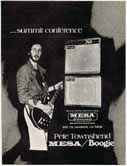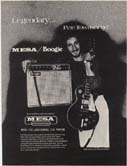Pete’s Gear: MESA/Boogie Amplifiers
MESA/Boogie MkI combo and MESA/Boogie Studio Preamp
One of the amplifiers Pete Townshend is associated with is the MESA/Boogie combo. One of the first “boutique” amplifiers, Pete was an early adopter, acquiring one in 1976 after George Harrison and Eric Clapton began using them, and using one on the recording of Who Are You in 1977/1978. He also used MESA/Boogie studio preamps for the Who Are You recording, and would continue to use the preamp units, both in the studio and on stage, for many years to come. Pete actually approached MESA to offer to do the photo shoot for the amps (see right).
Pete’s use of MESA-Boogie products:
-
1977–78:
MESA/Boogie MkI combo and extension cab.
-
1977–present (studio):
MESA/Boogie preamps direct into compression into recording console.
-
1982:
MESA/Boogie 4×12 speaker cabinets instead of Hiwatt SE4123 cabinets.
-
1989, 1996–1997:
MESA/Boogie preamps (into Demeter direct boxes, direct into board).
Features: two channels; five-band EQ; “fat” and “bright” switches; spring reverb; effects loop; two main outs; two recording outs; four 12AX7 valves; one 12AT7 for reverb.
-
2006
MESA/Boogie 2×12 vertical Studio cabinet with front metal grille, topped by Hiwatt Signature CP103 amplifier.
Selected quotes from Pete Townshend
All quotes and references are copyright their original owners and are included for reference only.
From April 1980 issue of Sound International article, courtesy Joe G’s site.
I endorse Boogie amps because they’re handmade and a lot of care goes into them and they’re good and the people who make them won’t compromise. At least they haven’t yet. They’re not entirely to my taste; they’re much more complicated than they look and they’re quite hard to get used to. I don’t get them for nothing. I wish I did. I have to put my name on them to get one at all.
Guitar Player, October 1989
MESA/Boogie have made a very good front-end tube preamp, and I’m using four of those. It’s the best I’ve ever tried; I’ve tried literally everything on the market, and there are a few things out there that don’t really deserve to be on sale. Tom Scholz’s small rack Rockman, I think he calls it the Sustainor, is absolutely brilliant; I used that on my album a lot. One problem is that the compressor at the front end operates even when it’s not switched on, so if you’ve got a guitar with high output, it tends to compress up anyway. But the Boogie is a real front-end, professional product which I feel happy about onstage. So if worse came to worst, I could plug my guitar into one of those amplifiers, and have a four-speaker stack tucked in some booth at the back of the hall … like the way you would record heavy guitar in the studio. It’s very rare that anyone stands in front of his own stack and plays; you would normally sit in the control room and hear it remote, just like the engineer and the producer. That’s the way I’m operating: studio conditions.
Photo Gallery
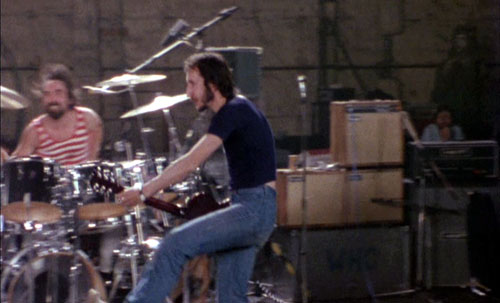
July 1977, with one MESA/Boogie MkI combo and two extension cabs, plus one Hiwatt CP103 and SE4123 4×12, far right.
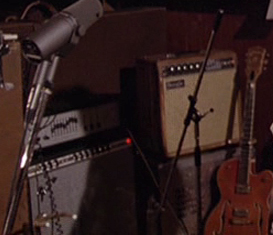
1978, at right, MESA/Boogie MkI combo. At left, Gelf preamp unit on top of silverface Fender Deluxe Reverb. Guitar is 1959 Gretsch 6120 Chet Atkins Hollow Body.
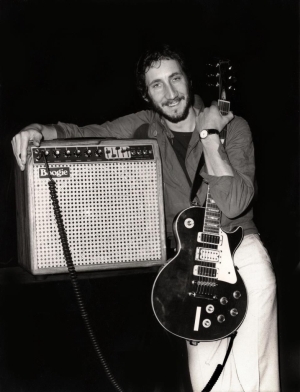
Click to view larger version. Ca. 1977, MESA/Boogie promotional photos of Pete. Guitar is Gibson Les Paul Deluxe (no. 1).
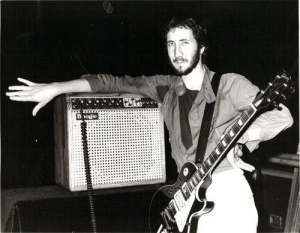
Click to view larger version. Ca. 1977, MESA/Boogie promotional photos of Pete. Guitar is Gibson Les Paul Deluxe (no. 1).
1982
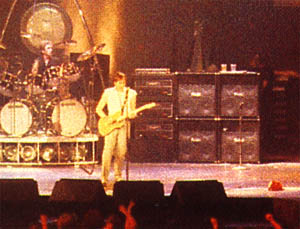
1982: Pete’s Hiwatt rig with four MESA/Boogie 4×12 cabinets. Amplifiers are three Hiwatt CP103s, topped with Roland SDE-2000 DDL digital delay rack unit. Guitar is gold-top Schecter, into MXR Dyna-Comp.
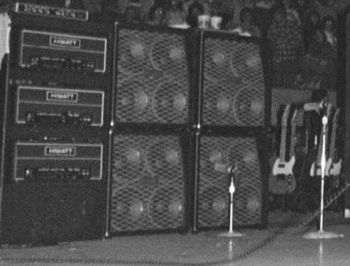
1982: Pete’s Hiwatt rig with four MESA/Boogie 4×12 cabinets. Amplifiers are three Hiwatt CP103s, topped with Roland SDE-2000 DDL digital delay rack unit.
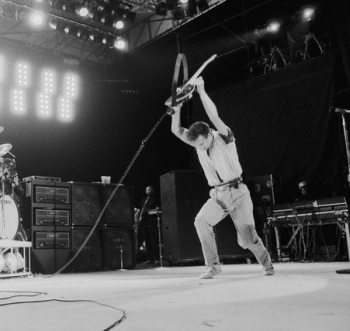
Ca. 1982: Pete’s Hiwatt rig with four MESA/Boogie 4×12 cabinets. Amplifiers are three Hiwatt CP103s, topped with Roland SDE-2000 DDL digital delay rack unit. Guitar is single-bound black Schecter, into MXR Dyna-Comp.
1989
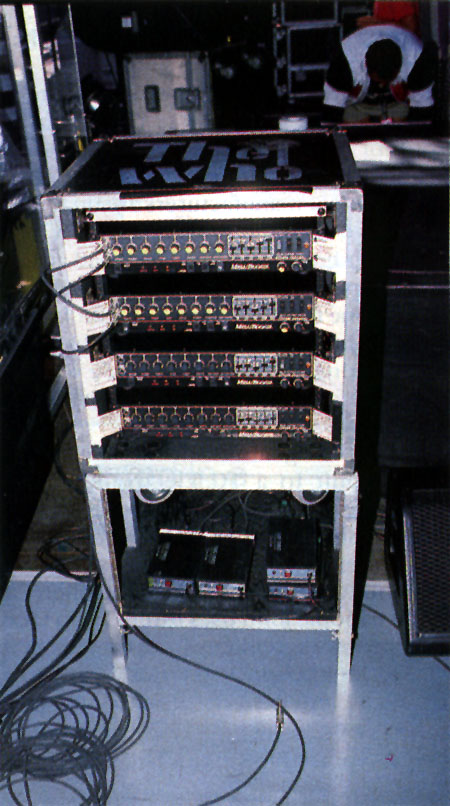
1989: Four rack-mounted channel-switching MESA/Boogie Studio preamps (one for electrics, one for acoustics, two for backup spares), into Demeter direct boxes into onstage mixing console, fed to PA and to wedge monitor.
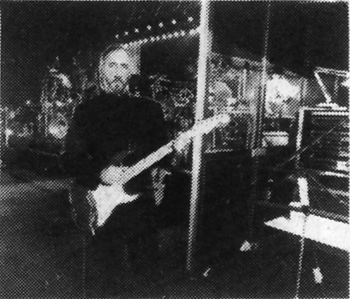
1989: View of the four rack-mounted channel-switching MESA/Boogie Studio preamps. Guitar is Fender Eric Clapton Stratocaster.
1996–97
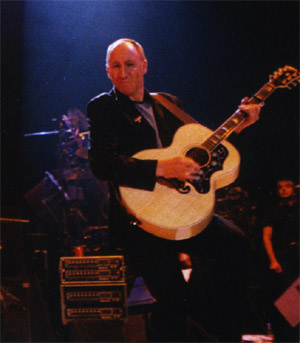
1996: Four rack-mounted channel-switching MESA/Boogie Studio preamps (one for electrics, one for acoustics, two for backup spares), in different road case than 1989 rack, into Demeter direct boxes into onstage mixing console, fed to PA and to wedge monitor. Guitar is Antique Natural Gibson J-200.
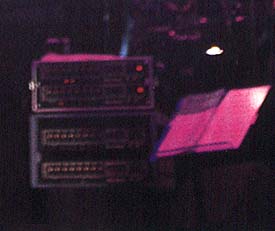
1997: Four rack-mounted channel-switching MESA/Boogie Studio preamps (one for electrics, one for acoustics, two for backup spares), in different road case than 1989 rack, into Demeter direct boxes into onstage mixing console, fed to PA and to wedge monitor.
2006
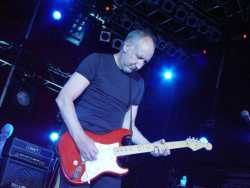
Click to view larger version. Ca. 2006, Pete playing through one Hiwatt Signature CP103 and Mesa/Boogie 2×12 vertical Studio cabinet with front metal grille (60w?), as part of Fender Vibro-King rig.
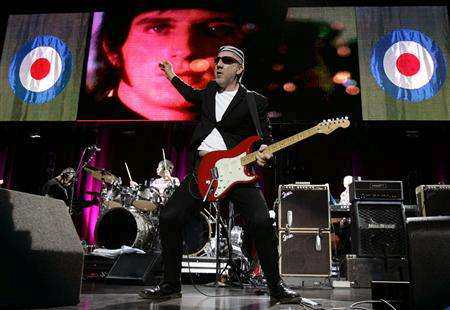
Ca. 2006, Pete playing through one Hiwatt Signature CP103 and Mesa/Boogie 2×12 vertical Studio cabinet with front metal grille (60w?), as part of Fender Vibro-King rig.
Resources and Information
Contributors
Thanks to those who have made this page possible:
- Ian at The Boogie Files (archived)
Manufacturer
More information
- The Boogie Files (archived) ~History of MESA/Boogie, including details on models and technical details.
- Including: 1977 Mark I Maple (archived)
